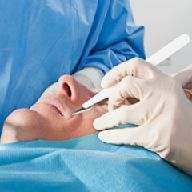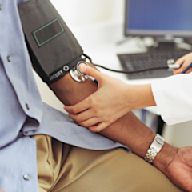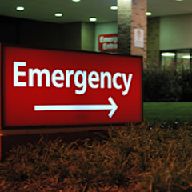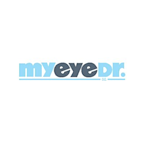Search results
Cast
Episode Guide
- 1. Pilot Mar 30, 2005
- Harlan's nemesis and former employer threatens to undermine the firm.
- 2. Whereabouts Apr 6, 2005
- A former college buddy asks Harlan for help rescuing a kidnapped girlfriend.
- 3. Wings Apr 13, 2005
- Judd Risk Management investigates the theft of a jet prototype.
May 10, 2022 · Learn about the anatomy, functions, and conditions of your eyes. See diagrams, pictures, and descriptions of the iris, cornea, pupil, lens, retina, and more.
Other articles from webmd.com
Discover more placesNear Columbus, OH
People also search for
Refine results for Eye Care
- Overview
- Function
- Anatomy
- Conditions and Disorders
- Care
- Additional Common Questions
- GeneratedCaptionsTabForHeroSec
Your eyes are a key sensory organ, feeding information to your brain about the outside world. Your eyes do the “physical” part of seeing. The signals they send allow your brain to “build” the picture that you see. Eye-related symptoms are also key clues to issues affecting your whole body, so experts recommend making eye health a priority.
Contents
Arrow Down
OverviewFunctionAnatomyConditions and DisordersCareAdditional Common Questions
Contents
Arrow Down
How do your eyes work?
Everything your eyes do starts with light from the outside world. Your eye structure lets light enter and pass through a series of clear components and sections, including the cornea, aqueous humor, lens and vitreous humor. Those structures bend and focus light, adjusting how far the light beams travel before they come into focus. The focus needs to be precise. If it isn’t, what you’re looking at appears blurry. Your eye has muscles that can make subtle changes to the shape of your eye, moving the focus point so it lands correctly on the retina. When light lands on the cells of your retinas, those cells send signals to your brain. The signals are like coded messages describing everything they can about the light. That includes the color, how intense it is and any other relevant details. Your brain decodes and processes the signals and uses them to “build” the image you see.
How do eyes work?
Human eyes are complex, and it takes many parts working together correctly for you to see.
What are the common conditions and disorders that affect your eyes?
The types of conditions that can affect your eyes vary depending on the specific part(s) involved. That’s because your eyes include a variety of tissue types. It has muscle, connective tissue, nerves, blood vessels and more. Some of the different types of eye conditions include — but aren’t limited to — the following: Refractive errors. These are problems with how you see because light isn’t coming into focus on your retinas correctly. Refractive errors can take many forms, such as focusing too soon (nearsightedness) or too late (farsightedness). They can also involve distortions in your sight, like with astigmatism. Corneal disorders. These are conditions that affect the cornea itself. They can happen for many reasons, ranging from congenital conditions (which you have at birth) to conditions that don’t develop until later in life. Retinal disorders. These conditions can happen because of problems that affect the retina directly. They can also be secondary effects of another disease, like how lattice degeneration can lead to a retinal detachment. Optic nerve-related conditions. These affect the nerve that links the eyes and brain. Examples include optic neuritis and optic atrophy. Age-related eye disorders. These conditions are more likely to happen as you get older, especially after age 65. They range from minor concerns like age-related loss of near vision (presbyopia) to serious concerns like cataracts. Some age-related eye diseases, like macular degeneration or glaucoma, are severe enough to cause permanent vision loss. Your eyes are also susceptible to more general conditions and issues. Examples of these include: Infections. Injuries and trauma. Cancer. Congenital malformations.
What are some common signs or symptoms of eye conditions?
Signs and symptoms of an eye condition can vary greatly. One reason for that is the many different parts that affect or contribute to your vision. A common example of this is how a metabolic and circulatory condition like Type 2 diabetes can lead to vision loss over time. Some symptoms affect the surface of your eye only. Others affect the inside of your eye. Some key types of eye symptoms include: Eye surface issues. Eye appearance/alignment. Eye function and sight.
What are some common treatments for eye conditions?
There are many possible treatments for eye conditions, and the treatments can vary widely. Some conditions or concerns that are common or not severe may have simpler treatments. Other conditions or concerns need more advanced care options. Some examples of types of eye care include: Vision correction. This is the main approach to treating eyesight issues like nearsightedness, farsightedness or age-related near vision loss. Eyeglasses and contact lenses are the most common options. Some people need prescription glasses or contacts, while others may only need reading glasses (sometimes known as “cheaters”). Others may choose to undergo vision correction surgery. Medications. Medications can treat many conditions that — either directly or indirectly — affect your eyes. The type of medication depends on the specific condition(s) involved and other factors. These include medicated drops or ointments you apply to your eyes or medications you take other ways (by mouth, via injection or infusion, etc.). Surgery. Many eye conditions are treatable with surgery. These can include a variety of methods, including phacoemulsification (which uses ultrasound to break up cataracts), cryotherapy (which uses intense cold), radiofrequency ablation (which uses intense heat) and laser surgery. Many other possible treatments can play a role in treating eye conditions or symptoms. Because there are many influencing factors, your eye care specialist or healthcare provider is the best person to tell you more about treatment options. They can explain the options and help you choose one that’s most likely to help you.
How can I care for and keep my eyes healthy?
There are several things you can do to maintain your eye health. You can: Get regular eye exams. Everyone should get an eye exam every one to two years, regardless of whether or not they need glasses or contacts. And if you have a higher risk of eye disease, you may need more frequent eye exams. Your eye specialist can advise you on how often you should get an exam. Wear eye protection. Safety glasses or goggles can make all the difference in avoiding eye injuries or damage. While putting them on might seem like a hassle or unnecessary step, they can spare you a lot of pain and avoid irreversible damage. Quit using tobacco, or never start. Nicotine-containing products, including vaping or smokeless (chewing) tobacco, can contribute to circulatory problems over time. This is especially true of the smaller, more delicate blood vessels in your eyes. Ask your provider for resources to help you quit. Make nutrition a priority. Getting enough essential vitamins, minerals and other nutrients is a big help to your eye health. Reach and maintain a weight that’s healthy for you. Your weight and overall health can influence your eye health. Don’t ignore eye-related symptoms. Changes in your vision or symptoms that otherwise affect your eyes are often the earliest signs of a greater issue. Talk to an eye care specialist or healthcare provider about your concerns. It’s better to ask and not have an issue than not ask and have an existing issue worsen.
When should I get medical attention for conditions or issues related to my eyes?
Several eye-related changes or symptoms mean you (or someone you care for) need to get medical attention. Some examples of these include: Sudden vision loss (either partial or total) that affects one or both eyes. An injury where you have something stuck in your eye, or you feel like something is stuck on the surface of your eye, even though you can’t see anything there. Burns around or on your eyes (even minor burns). Any injury that makes your eye red, swollen, bruised or bleed. Any condition or injury that causes the eye socket area around your eyeball to swell. If your eyes bulge or stick out noticeably farther than usual. If your vision becomes noticeably cloudy, hazy or foggy (especially if this happens suddenly). If you have eye symptoms along with vomiting, chills, fever or other infection symptoms. Bright flashes of light in your vision, a sudden increase in floaters, or a loss of vision that looks like a dark curtain or wall covering part of your vision. Kaleidoscope vision. If you have trouble moving your eyes a certain way or direction they can usually move. Sudden tunnel vision. Distortions or loss of central vision (with or without changes to your peripheral vision). There are many more reasons other than those listed above. When in doubt, the safest choice is to get medical attention quickly. Doing so could help protect your eyesight and vision or could even help save your life.
What are the most common eye problems?
The most common eye problems (other than temporary conditions like eye infections or irritation) include: Refractive errors. Age-related cataracts. Age-related macular degeneration. Retinal diseases (especially diabetes-related retinopathy). Glaucoma. Dry eye disease.
Which organ is connected to the eyes?
Your optic nerve is a direct connection between your eyes and brain. How your eyes develop also means your retinas are technically part of your central nervous system, brain and spinal cord. A note from Cleveland Clinic Your eyes are one of your brain’s windows to the world. They gather light from your surroundings and help your brain build the picture you see. It’s easy to take this sense for granted when it works properly and easy to miss when it doesn’t. You can do several things to help protect and maintain your eyes, many of which involve simple steps you can take every day. If you have concerns about your vision and any related health effects, it’s a good idea to talk to an eye care specialist or healthcare provider. They can help you learn more and take steps to safeguard your vision. And when in doubt, talk to a medical professional or seek medical care. Doing so without delay could protect you from long-term vision issues. Medically Reviewed Last reviewed by a Cleveland Clinic medical professional on 11/15/2023. Learn more about our editorial process.
Learn how your eyes work, what parts they include and what can go wrong. Find out about refractive errors, corneal disorders, retinal disorders, optic nerve problems and more.
human eye, in humans, specialized sense organ capable of receiving visual images, which are then carried to the brain. Anatomy of the visual apparatus. Structures auxiliary to the eye. The orbit.
Humans have two eyes, situated on the left and the right of the face. The eyes sit in bony cavities called the orbits , in the skull . There are six extraocular muscles that control eye movements.
An eye is a sensory organ that allows an organism to perceive visual information. It detects light and converts it into electro-chemical impulses in neurons (neurones). It is part of an organism's visual system .
Sep 16, 2022 · Learn about 19 common eye problems, from eyestrain and red eyes to cataracts and glaucoma. Find out what causes them, how to treat them, and when to see a doctor.
People also ask
What is the connection between eyes and brain?
Why are your eyes so important?
What are the functions of the eye?
Do you have eye problems?
What are the signs and symptoms of an eye condition?
What is a pupil in a human eye?
Feb 20, 2024 · Learn about the 16 parts of the eye and how they work together to enable vision. Find out how the cornea, iris, pupil, retina, and other structures affect your eyesight and what conditions can affect them.











































